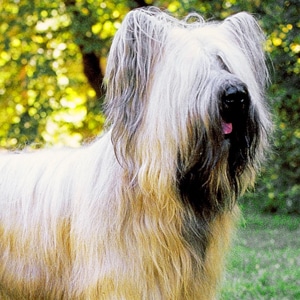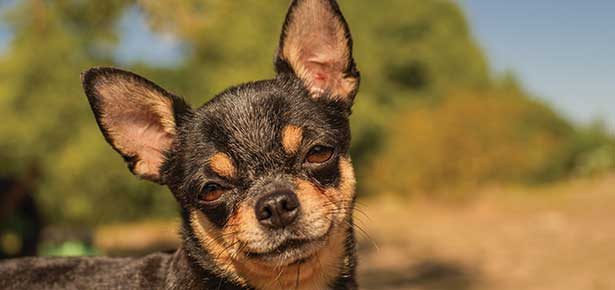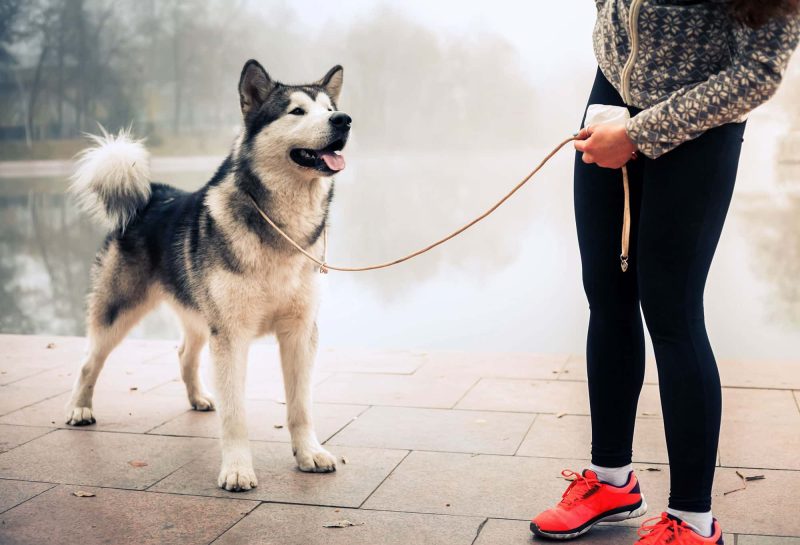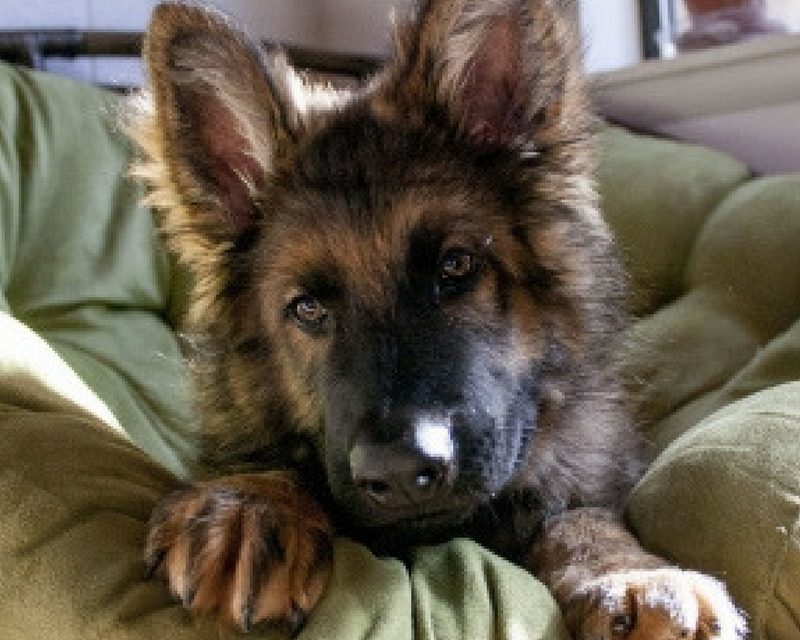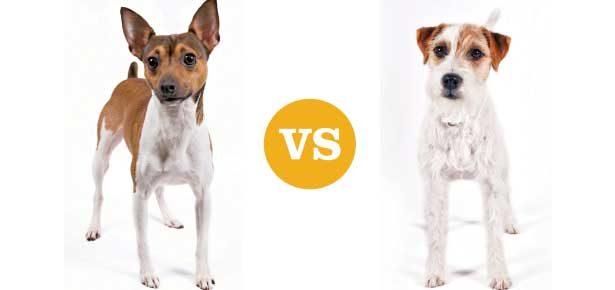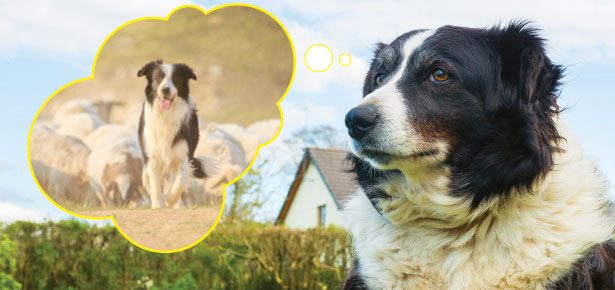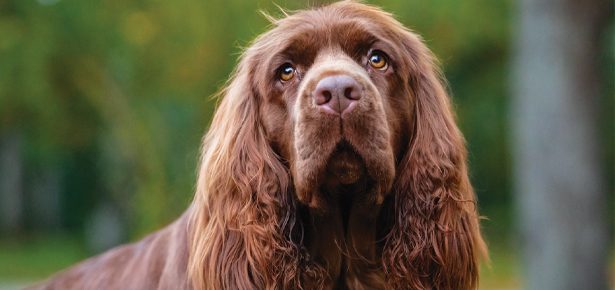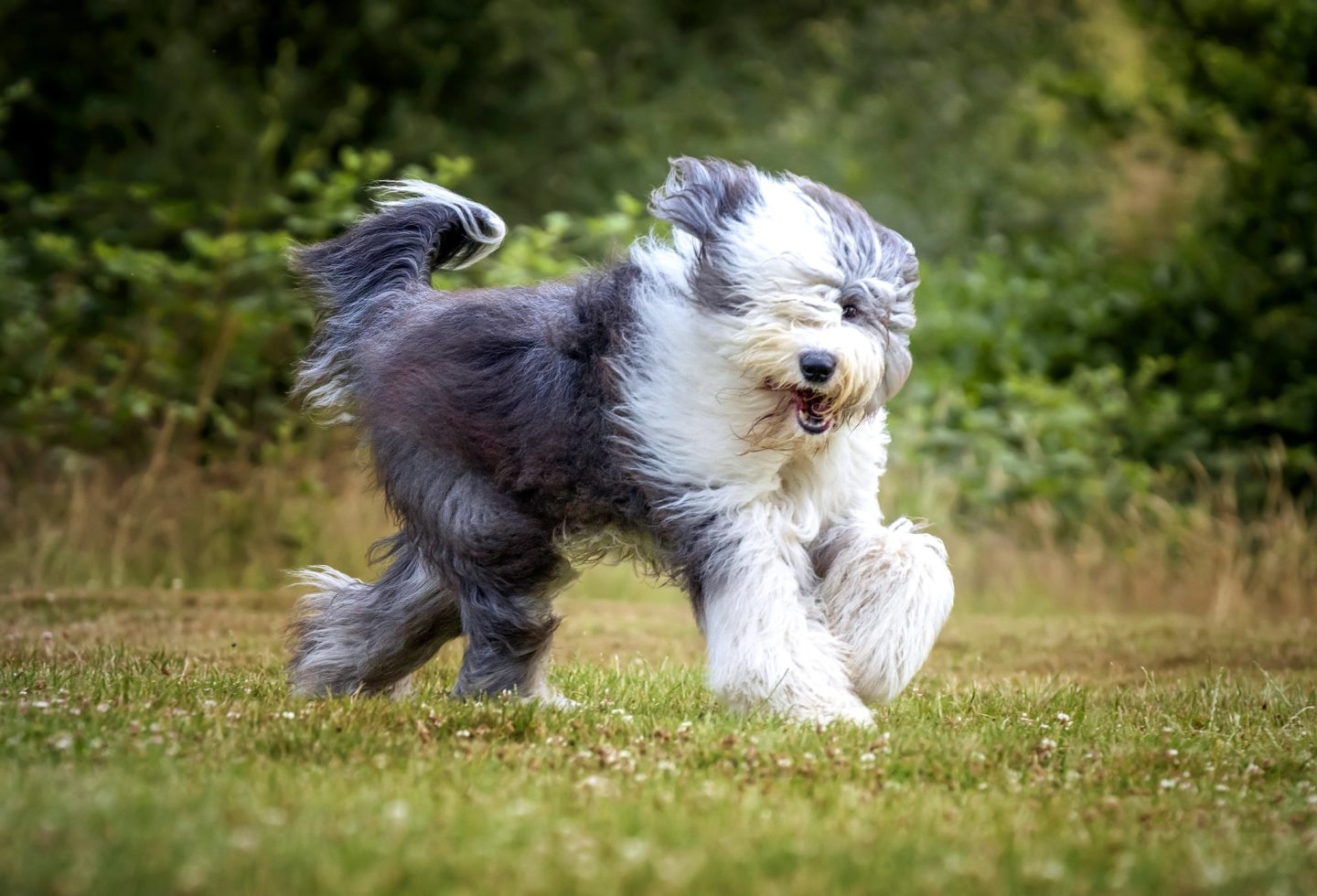
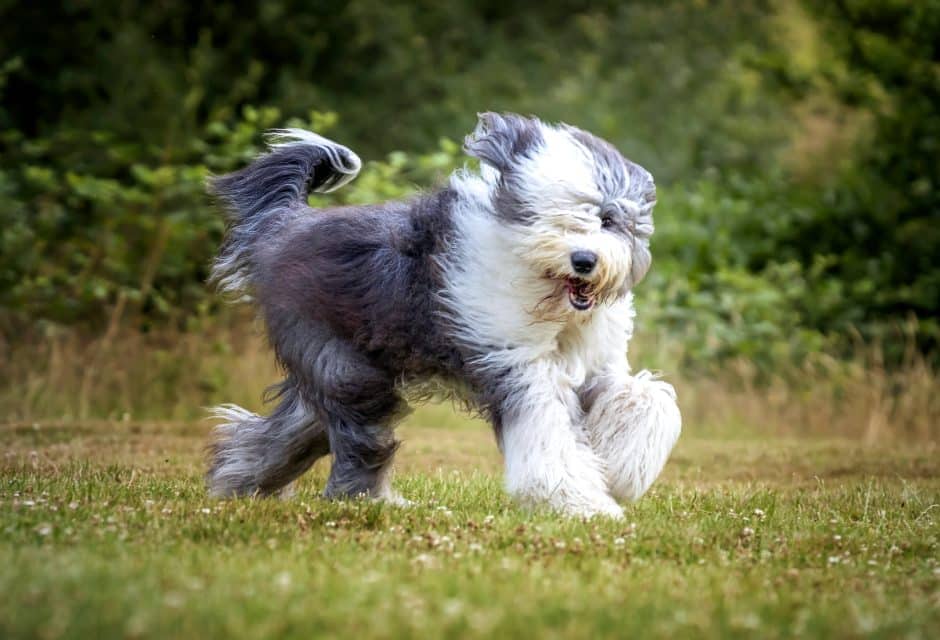
The Old English Sheepdog
Get to know this big, shaggy dog with the clown-like personality
We’ve all come across a unique-looking dog at some point and wondered what is that? Some breeds are a little hard to pinpoint or distinguish from one another—but not this one. There’s just no mistaking the Old English Sheepdog. The hallmarks of this breed—wonderful woolly coat, bear-like gait, and clown-like personality—make him a standout.
So where did this big, shaggy dog come from? As with so many older breeds, records of exact origins don’t exist, but evidence suggests the breed originated in the early nineteenth century, primarily in the southwestern counties of England. Most fanciers point to the role the Scottish Bearded Collie played in shaping the breed’s development; others are convinced that the Russian Owtchar, a sizable and hard-working sheepdog with similar proportions to the modern Old English, was a primary influence. Both may be right.
Regardless, by the beginning of the 18th century, the breed was emerging and was known as a “drover’s dog.” What’s a drover, you ask? Drovers took large herds of animals to market, in return for a delivery fee. Their job was an extremely difficult one—driving cattle, sheep, and other animals in the hundreds or even thousands over rough terrain and down the path to the market. The drover’s canine companion needed to be intelligent, agile, fierce when required, and certainly in possession of great stamina. The Old English Sheepdog fit the bill, and his weatherproof coat offered further practical advantage.
By the late 1800s, Old English Sheepdogs had caught the eye of fanciers and were being imported into the United States. Some of America’s wealthiest early settlers were admirers of the breed; the Morgans, Vanderbilts, Goulds, Harrisons, and Guggenheims were reportedly all fanciers. The Old English Sheepdog Club of America (OESCA) was founded in 1904 and the breed received American Kennel Club (AKC) recognition the following year.

Life on White/Bigstock
Today, while some farmers still use the breed for herding purposes (and swear there is no better choice for the job!), the Old English primarily serves as family pet. In 2013, the breed was the 78th most commonly-registered AKC breed—not exactly rare, but still by no means a dog you’ll see on a daily basis.
Is the Old English the breed for you? There are a few traits for which the Old English Sheepdog is most recognizable. One is its rather unique gait, which is like the shuffle of a bear. With his size and coat, you might almost wonder if you’ve seen a panda passing by, but no—just an Old English on the move. But before you start to think this is a slow and lumbering animal, think again. This dog is athletic by nature.
The Old English will thrive in an environment where exercise and daily play time are the norm. You may not be using this dog to drive herds, but the Old English will need some sort of modern replacement for his original purpose. He needs mental and physical exertion, even if it’s just a game of Fetch which, by the way, he might just play for hours (and hours!).
Don’t forget, the Old English is a herding animal. Can he be “just” a pet? Of course, but that herding instinct remains. Like so many world-class herders, the Old English wants to “reign in” other animals and people. The breed is renowned for being gentle and loving with children, but caution and common sense around youngsters is important, as in his exuberance to herd the kids the occasional tumble can occur. By the way, since the Old English will try to herd just about anyone and anything—including moving vehicles sometimes; a fenced-in yard is critical for his safety.
Profile: The Old English Sheepdog
Size: Large
The AKC accepts a shoulder height of 22 inches and higher for males; 21 for females. Correct proportion is emphasized. The breed’s length should be virtually the same as its height. Weight is not addressed in the standard, but some Old English males have been known to tip the scales at 100 pounds.
Activity Level: 5/5
This world-class herder needs plenty of daily exercise and ideally a “job” that gives him an outlet for his considerable mental and physical energy.
Grooming: 5/5
Plan on a three to four hour weekly brushing session, just for basic maintenance.
Heritage:
As the preferred working dog of choice for drovers, the Old English helped guide vast herds of animals over rough terrain and straight to market.
For more information on Old English Sheepdog rescue in the U.S., visit oldenglishsheepdogclubofamerica.org/owning-an-oes/rescue/. In Canada, visit oldenglishsheepdog.rescueme.org/ca.
As with all dogs, especially those with the desire to work, obedience training is a necessity and should begin at the puppy stage. The good news is that the Old English is highly intelligent, so training efforts will pay off. And because this breed is so athletic and versatile, basic obedience training can open the door to all sorts of activities that he’ll almost certainly enjoy. Of course, the breed has been known to excel in herding trials, but the Old English has also done very well in agility, flyball, obedience and, well, come to think of it just about any sporting activity.
Outside of those activities, you’ll get every dog lover’s ultimate reward: a doting companion. The Old English will be content to lie at your feet and dote on you. He’ll also surprise you by making you laugh on a daily basis. This breed is notorious for its sense of humour and is often referred to as clown-like.
Health-wise, the Old English is hearty and without a spate of challenges, but like all breeds can be affected by some issues. Certain eye disorders and hip dysplasia do pop up in the breed.
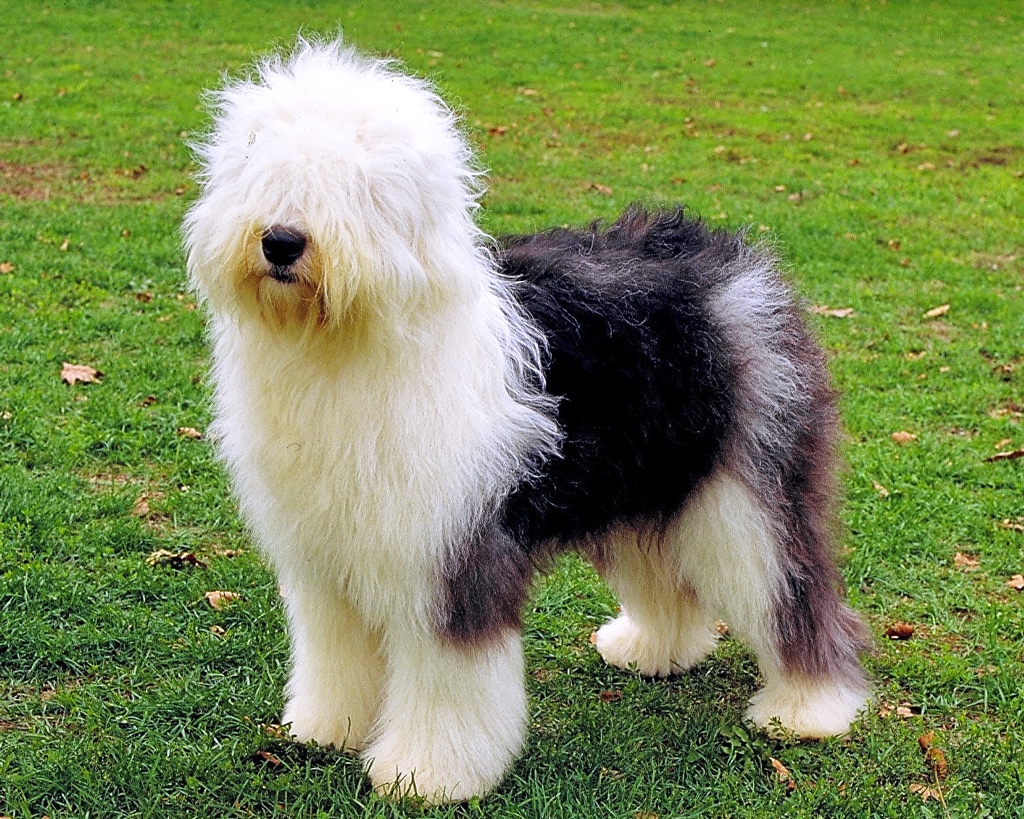
Mary Bloom/AKC
And now… about that fur. Yes, that glorious shaggy coat is the second trademark of the breed. Well, let’s face it; if you’re looking for low-maintenance grooming, this probably isn’t the breed for you. But, the Old English Sheepdog’s coat is really no harder to care for than any other large, long-coated breed. A grooming routine is a must, though, and this should begin at a very early age.
The Old English puppy should be introduced to regular grooming sessions and taught to remain calm during this time. It’s work, sure, but those who love the breed argue it’s a small price to pay for living with the Old English, and, indeed, for many it becomes a labour of love. Those weekly brushing sessions are quality bonding time, and crafty owners have been known to use their Sheepdog’s hair to spin into yarn. (Yes, really.)
Athletic, jovial, loving, and wonderfully unique, it’s hardly a wonder that this shaggy dog has won the hearts of so many. What’s not to love?
If you like the Old English Sheepdog, you might consider the:
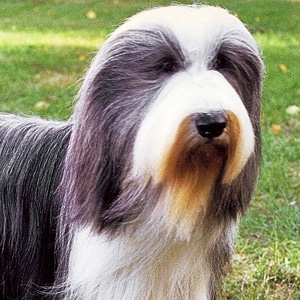
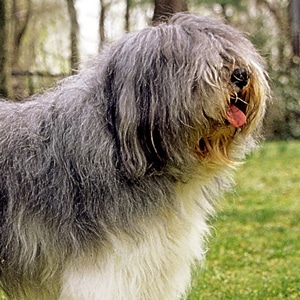
Bearded Collie Polish Lowland Sheepdog Briard
» Read Your Breed For more breed profiles, go to moderndogmagazine.com/breeds
This article originally appeared in the award-winning Modern Dog magazine. Subscribe today!
Join the newsletter and never miss out on dog content again!
"*" indicates required fields
By clicking the arrow, you agree to our web Terms of Use and Privacy & Cookie Policy. Easy unsubscribe links are provided in every email.

